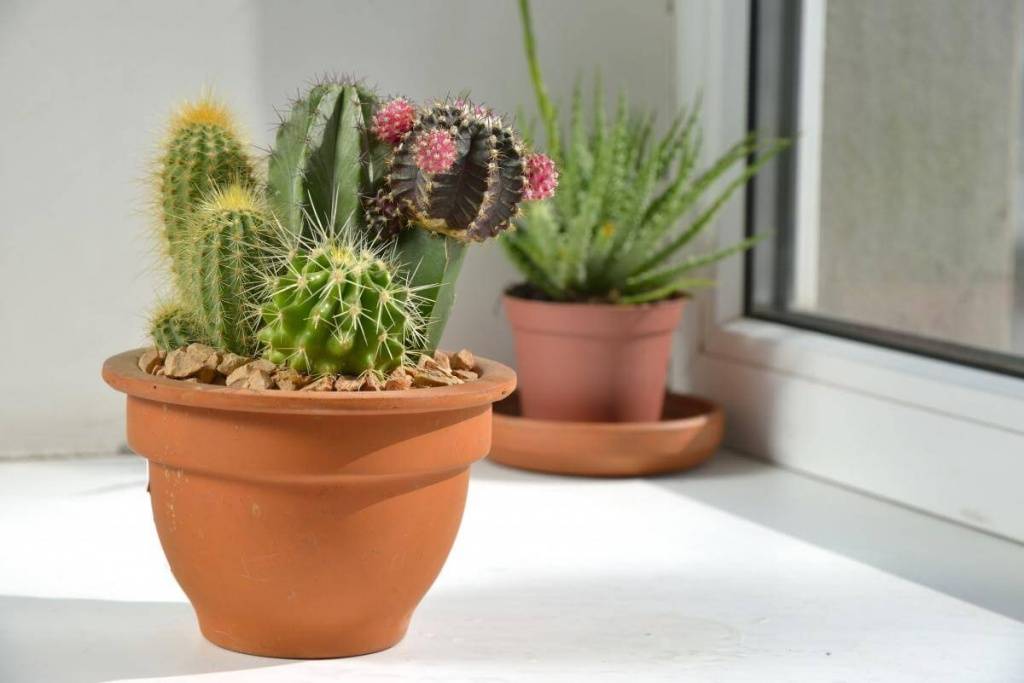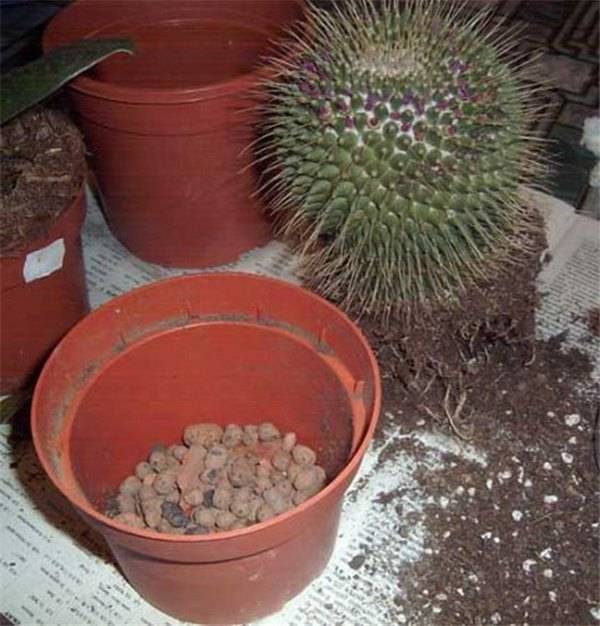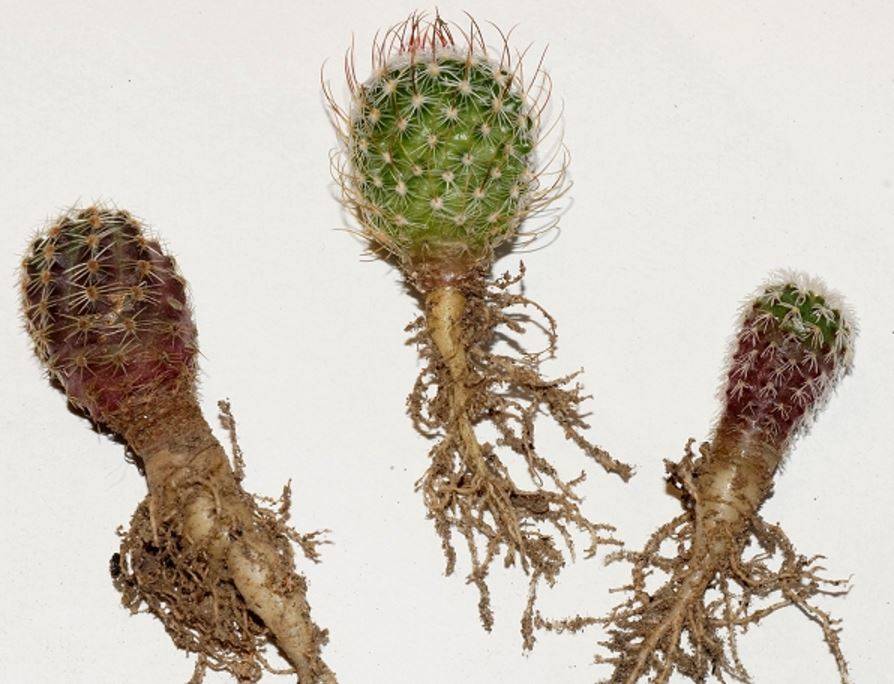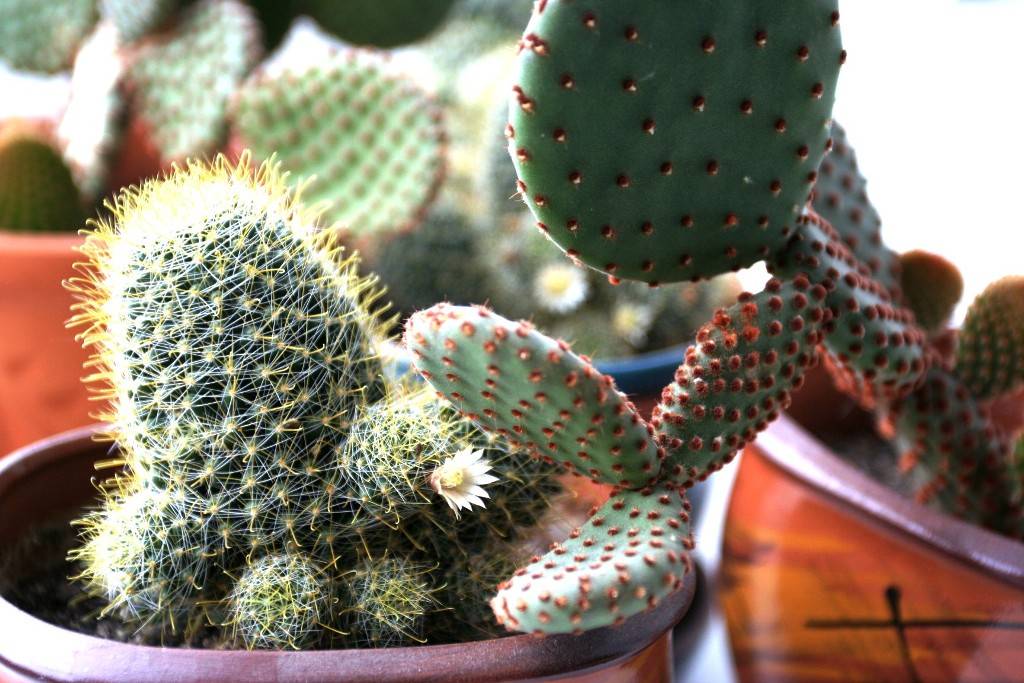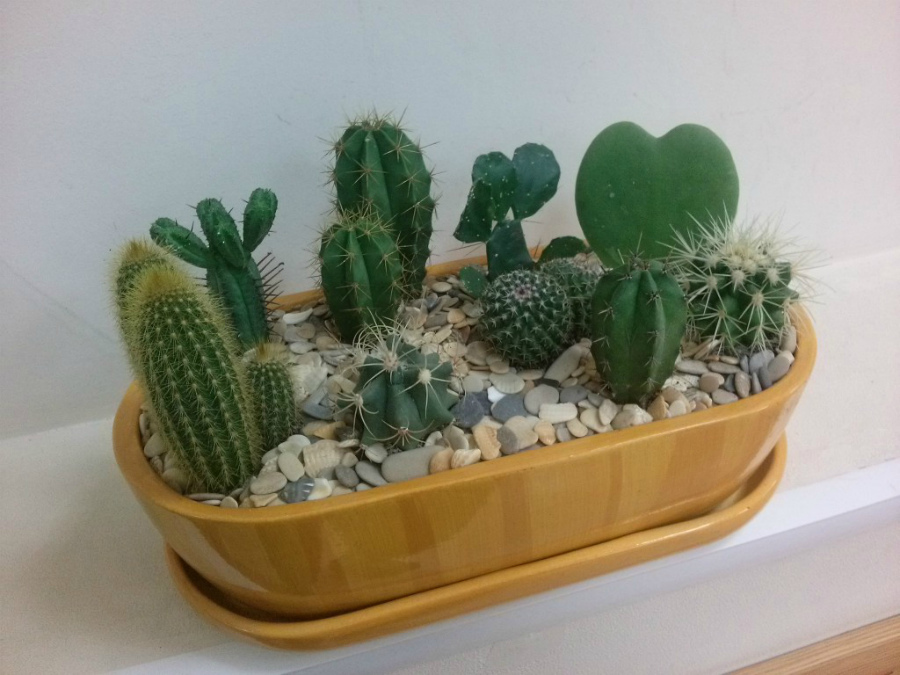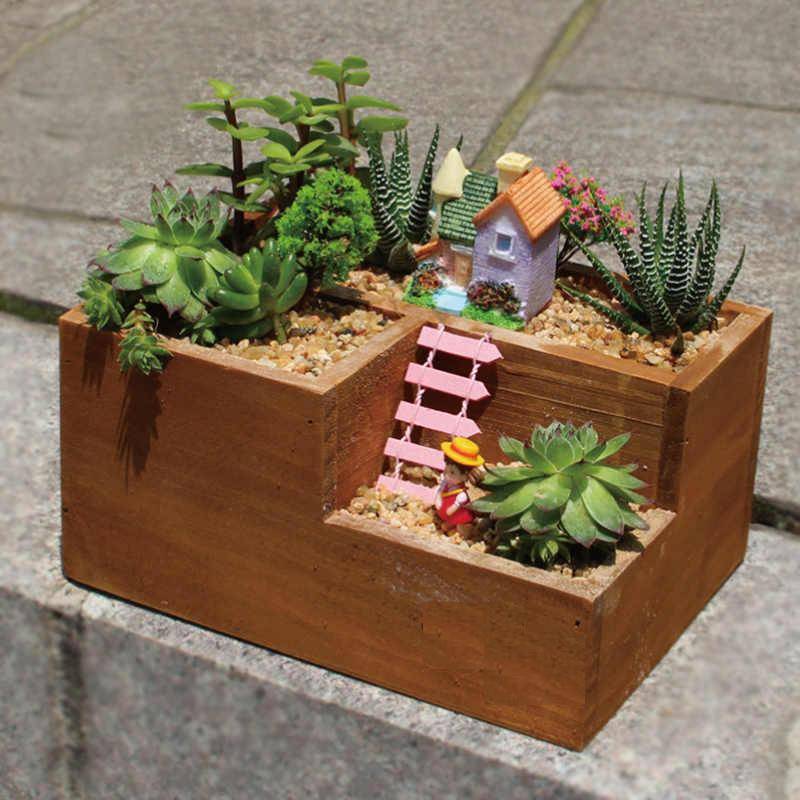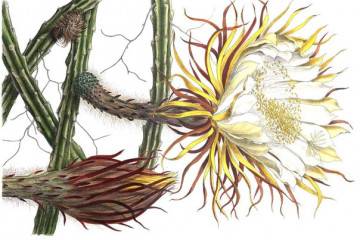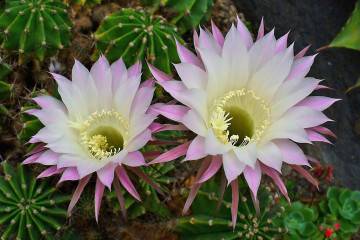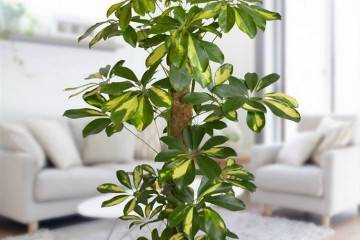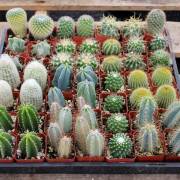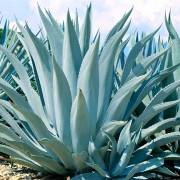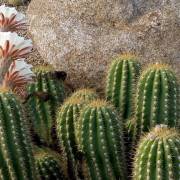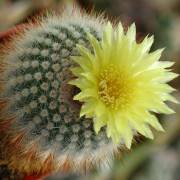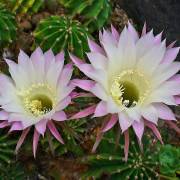Cactus in a pot: examples of correct planting and options for several flowers
Content:
There is a common misconception that cacti do not need any special care and this flower is suitable for those who do not want to bother with watering, replanting and feeding the plant. Is this so, described below in the article.
Choosing a suitable landing site
Many, out of inexperience, put a pot of cactus on a computer desk or on a shelf where the sun's rays do not reach, believing that it is a picky flower. Such frivolity can lead to yellowing of the needles of the plant and even its death. Therefore, in order to determine where the cactus will live in a pot, you need to know which species it belongs to.
If the florist is the owner of a desert cactus, then you can safely choose a windowsill for him on the south side. He loves the sun's rays and is resistant to high temperatures. Its ribbed surface and thickened root system allow it to evaporate moisture very slowly, which excludes frequent watering of the plant.
East or north window sills are the optimal solution for growing cacti, as even the most sun-resistant plants get burned, as a result of which they form black or red spots.
In winter, a dormant period begins when the plant does not need bright sunlight and will calmly endure this period, being in the shade. In the summer, during the period of active growth, it is recommended to periodically take it out to the balcony for ventilation.
Choosing the right pot
When choosing which pots to plant cacti, the main criterion should be the size of the container, because depending on the type of plant, the volume of the root system, you will need a larger pot or, conversely, a small one.
Prepare a substrate for planting or transplanting a cactus in advance. In its composition, it must necessarily contain earth mixed with dry leaves, pieces of peat, coal and sand. The substrate should be well dried, have high air permeability and a moderate level of acidity.
When choosing a pot, plastic and clay products are in greatest demand among florists. When purchasing these or those pots for cacti, you should take into account the peculiarities of growing in each of them. So, a plastic pot slows down the process of evaporation of moisture, so the root system can rot. In a clay pot, on the other hand, evaporation occurs quickly enough, which should be taken into account when watering the plant.
Florists also often ask do you need drainage for cacti. The answer is yes, because it is thanks to him that there will be no stagnation of water in the pot, which will exclude decay of the roots. Drainage can contain crushed stone, expanded clay, coal, eggshells, wine cork.
Transfer
A cactus requires a transplant when the old pot becomes small for him. It is better to do this with the onset of spring or summer, during a period of active growth, except for flowering. Also, a recently purchased flower must be transplanted with a soil replacement, but this can be done only after 10-12 days in order to allow it to acclimatize in new conditions.
To prepare for transplanting, a few days before that, it is necessary to stop watering and spraying the plant so that the soil dries well. Then, knocking on the walls of the pot, carefully pull out the cactus with tweezers. You can also wrap the flower in several layers of paper and gently shake it out of the pot.
After that, it is necessary to knead the earthen lump remaining on the roots. If the substrate does not crumble well from the roots, then you can soak them in warm water.
After cleaning, the roots are carefully examined and, if damaged parts are found, cut off. For additional prophylaxis, the root system can be immersed in water at a temperature of 60 ºС for 15-20 minutes, then dried well for a couple of days.
After the necessary pot is selected, you can start the transplant process.
Drainage is laid out on the bottom of the pot with a layer of 3-5 cm, a small amount of the prepared substrate is poured out on top. After that, the cactus is carefully lowered into the pot, the roots are straightened and the soil mixture is poured. The root collar of the plant should not be covered with earth, remaining above its level. During planting, the substrate needs to be tamped a little, as a result of which it should turn out 1 cm below the container level.
The first few days after transplanting, the flower must undergo acclimatization in new conditions. You should not put it on a windowsill where the bright sun is shining, it is better to leave it in a shaded place. You can water the plant after 5-7 days. The water should be moderately warm (temperature 32-35 ºС). If the soil layer settles after watering, then you can add some more substrate to the pot.
If the transplant took place in the winter, then the first watering is done no earlier than 2-3 weeks. The room temperature should be 20-25 ºС. Fertilization is possible one month after transplanting. To do this, use mineral complexes containing potassium, phosphorus, nitrogen and trace elements.
When a question arises, how to plant a cactus, you can safely apply the transplanting rules described above.
Types of cacti for a pot
There are a huge number of cactus species that have original names. Mini cacti are more popular for home planting. Here are the most popular types:
- mammillaria. Has a silvery shade, blooms with large white buds in the form of a wreath;
- echinopsis. Has thick globular stems, white, red or pink flowers are located on the sides of the stem;
- prickly pear. The surface of the flattened stems is covered with red and white needles, blooming with large orange buds;
- Cereus is a long-liver, capable of growing for about 300 years, blooms with fragrant large white flowers;
- Astrophytum ibex is a spherical plant that blooms with beautiful yellow buds.
DIY pots
It is not necessary to purchase expensive pots from specialized stores. If you connect a little imagination, then it's easy to do it yourself.
There are special sets in which you can make a pot of your choice from polymer clay or gypsum. You can also use improvised means - use an old unnecessary cup and even cupcake molds, which you can additionally decorate with a tourniquet, glue and decorative tools. Coconut shells are excellent containers for planting a small cactus. Do not forget about drilling holes for drainage. For connoisseurs of individuality and interior decorations, with some effort and patience, you can make a wooden cactus house.
It is believed that cacti are grown most often by people with reserved emotions and a strict character. After all, this is how this flower, covered with thorns, looks at first glance. But thanks to the beautiful and rare flowering, cacti are popular with many amateur flower growers who can appreciate the beauty and grace of this plant and grow a wonderful specimen. Due to its unpretentiousness and ease of care, even the most inexperienced and busy person can wait for flowers.
